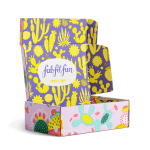
In a fast-paced world where convenience and efficiency are paramount, one-time use boxes and bags have quietly become indispensable in our daily lives. From the moment we order a meal online to the excitement of unboxing a new gadget, these humble packaging solutions play a vital role in ensuring products reach us safely, hygienically, and on time. Their simplicity belies their importance, making them the unsung heroes of modern logistics and consumer culture.
One of the most significant advantages of one-time use packaging is its ability to maintain hygiene and safety standards. In industries like food delivery and healthcare, single-use boxes and bags provide a sterile barrier that protects contents from contamination. For instance, meal delivery services rely on insulated cardboard boxes or paper bags to keep food at the right temperature while preventing exposure to external elements. Similarly, medical supplies often come in sealed, disposable packaging to ensure they remain uncontaminated until use. This focus on hygiene has become even more critical in a post-pandemic world, where consumers are increasingly conscious of health and safety.
Beyond hygiene, the convenience offered by disposable packaging cannot be overstated. Imagine a world without takeout boxes or shopping bags—every errand would become a logistical challenge. One-time use boxes and bags simplify our lives by providing lightweight, easy-to-carry solutions that are readily available and affordable. They enable businesses to operate efficiently, reducing the time and effort required for packaging and transportation. For consumers, they offer the freedom to enjoy products on the go without the burden of returning or cleaning reusable containers.
However, the environmental impact of single-use packaging has sparked important conversations about sustainability. Critics argue that the widespread use of disposable boxes and bags contributes to pollution and waste. While these concerns are valid, the industry has responded with innovations aimed at reducing its ecological footprint. Many companies now prioritize biodegradable, compostable, or recyclable materials, such as cardboard, paper, and plant-based plastics. These advancements not only address environmental issues but also align with the growing consumer demand for eco-friendly products.
Another often overlooked benefit of one-time use packaging is its role in branding and customer experience. Custom-printed boxes and bags serve as mobile advertisements, creating brand recognition long after the product has been delivered. The unboxing experience, fueled by social media, has turned packaging into a marketing tool. A well-designed box or bag can enhance perceived value, foster customer loyalty, and even go viral. In this sense, disposable packaging is not just functional—it’s an extension of a brand’s identity.
Looking ahead, the future of one-time use boxes and bags is likely to be shaped by technology and sustainability. Smart packaging, embedded with QR codes or NFC chips, could provide consumers with information about product origins, recycling instructions, or even personalized messages. Meanwhile, advances in material science may lead to even more sustainable options, such as packaging made from agricultural waste or algae. As consumer expectations evolve, the industry will continue to innovate, balancing convenience with responsibility.
In conclusion, one-time use boxes and bags are far more than mere disposable items. They are essential components of modern life, enabling hygiene, convenience, and branding while adapting to meet environmental challenges. As we move toward a more sustainable future, these packaging solutions will undoubtedly continue to evolve, proving that even the simplest innovations can have a profound impact on our world.




Leave a Message